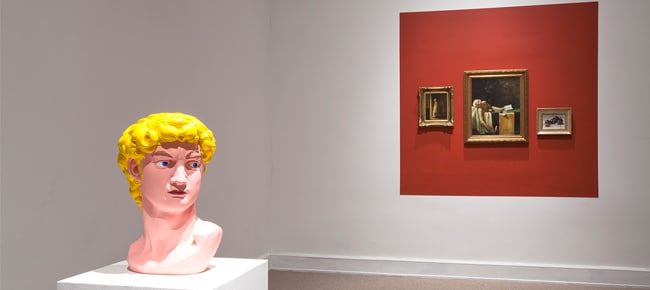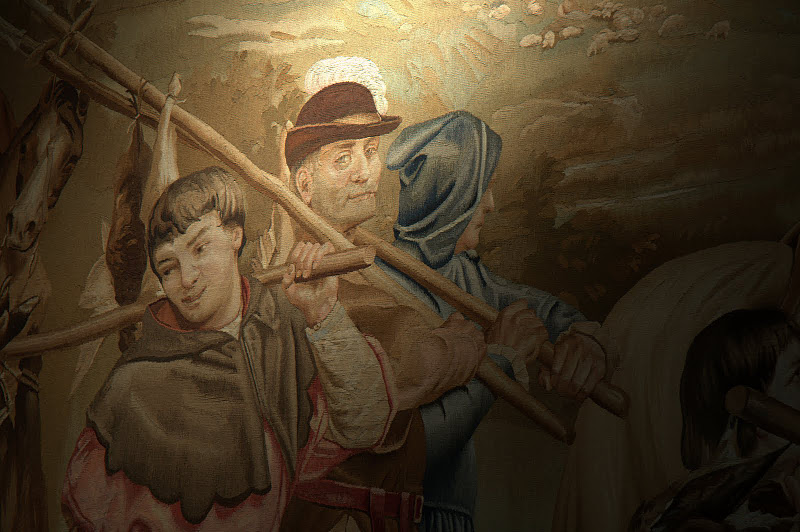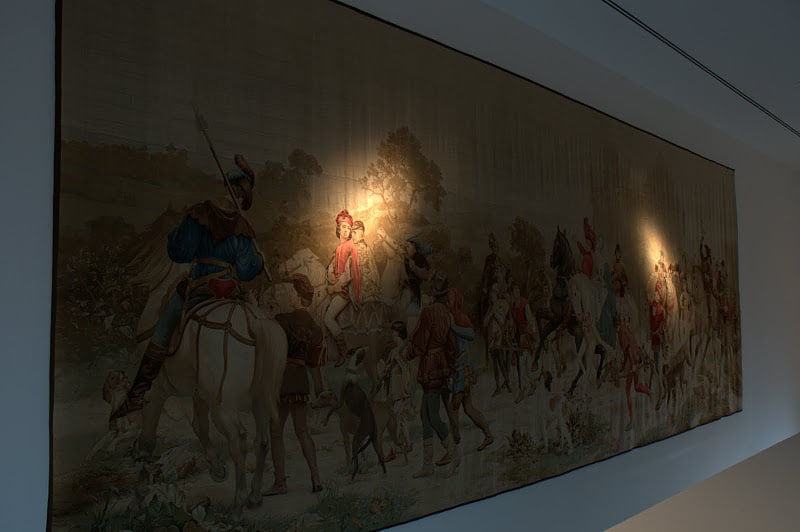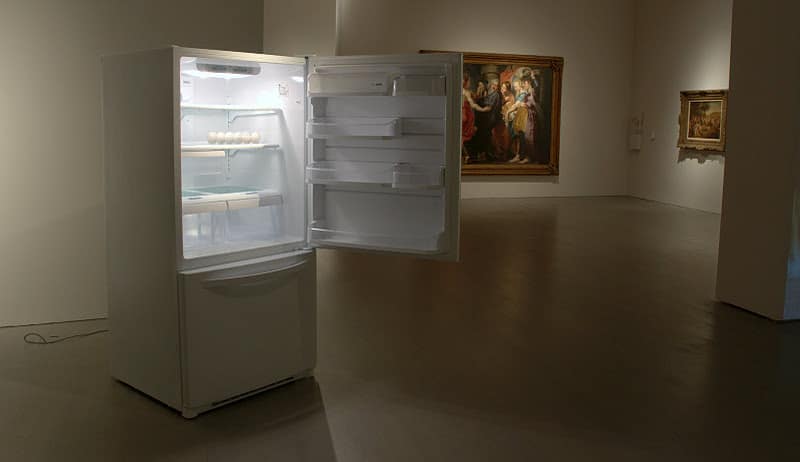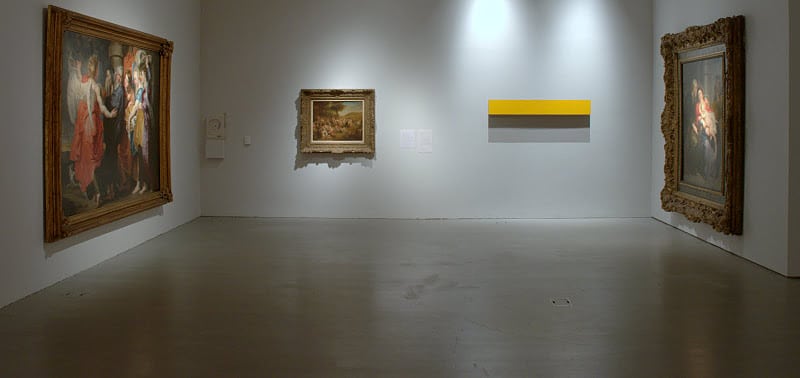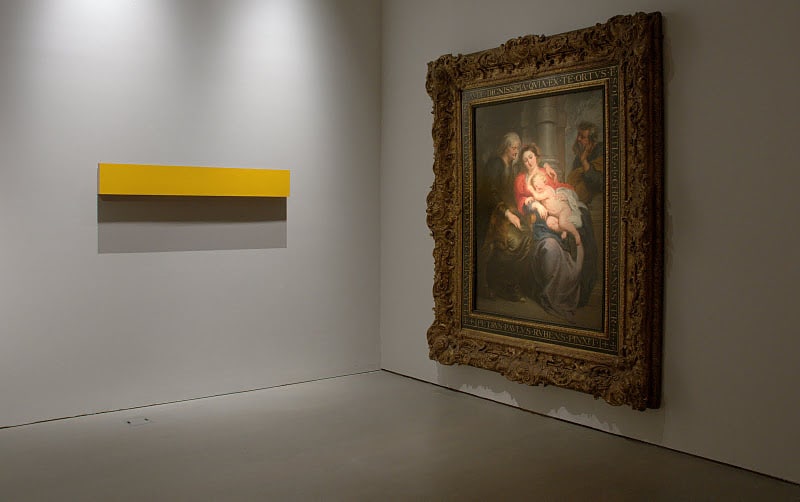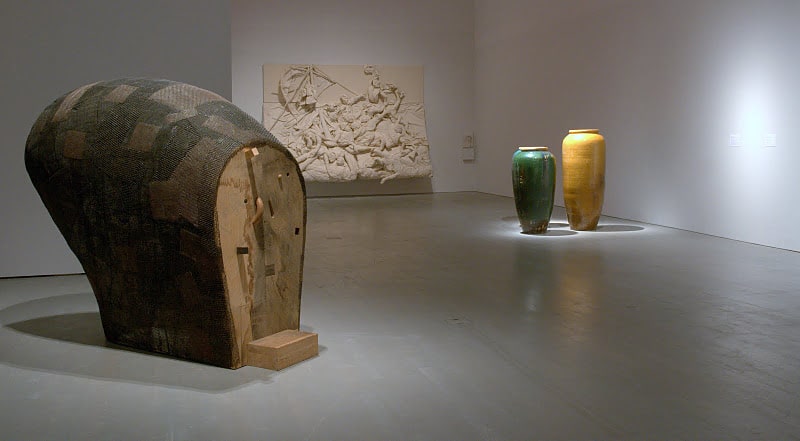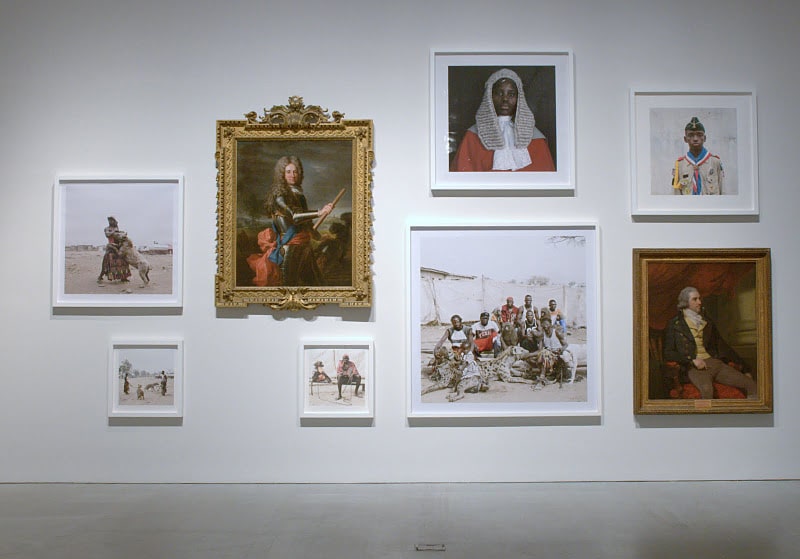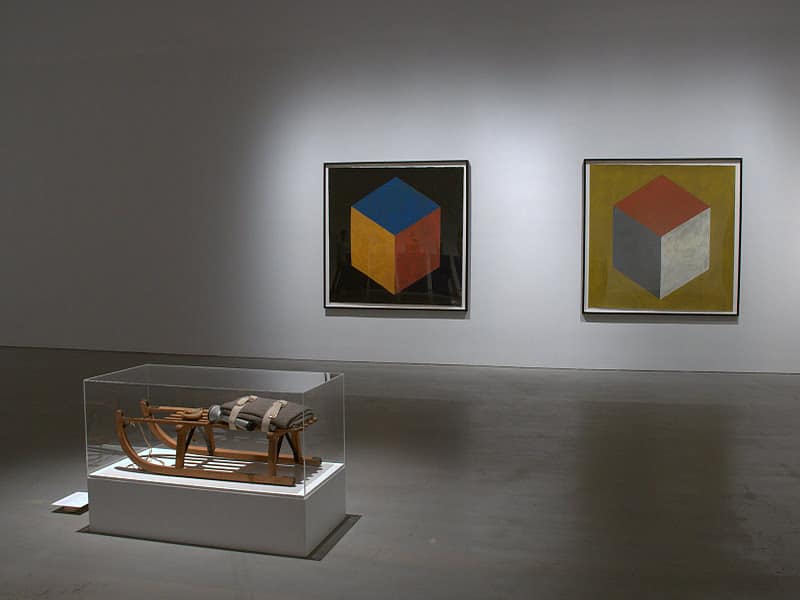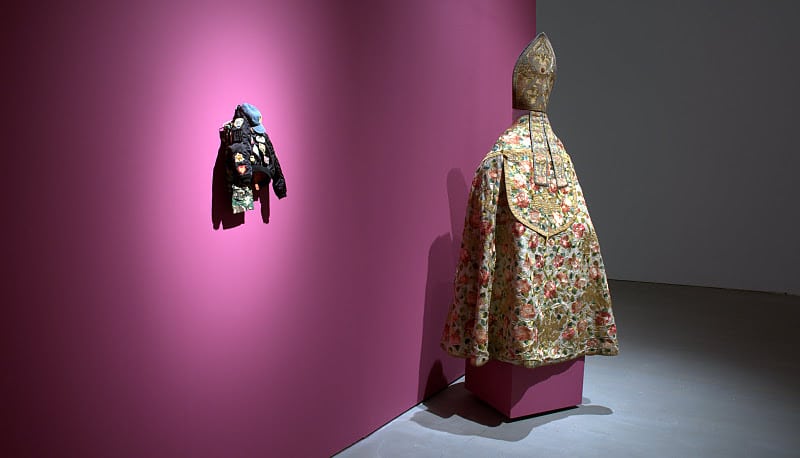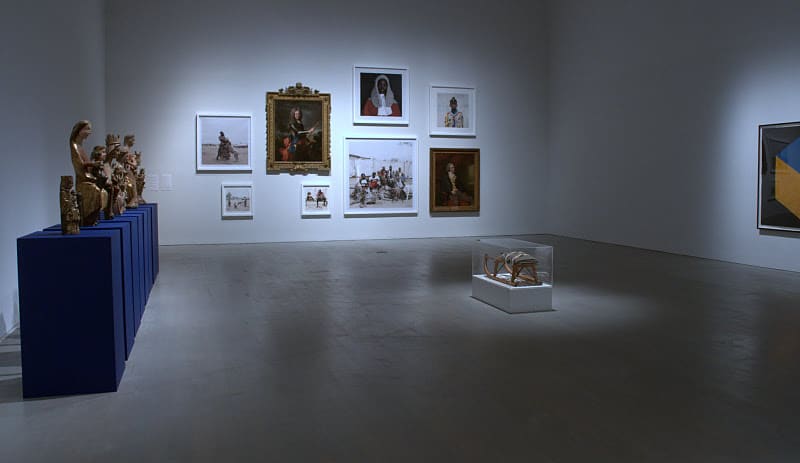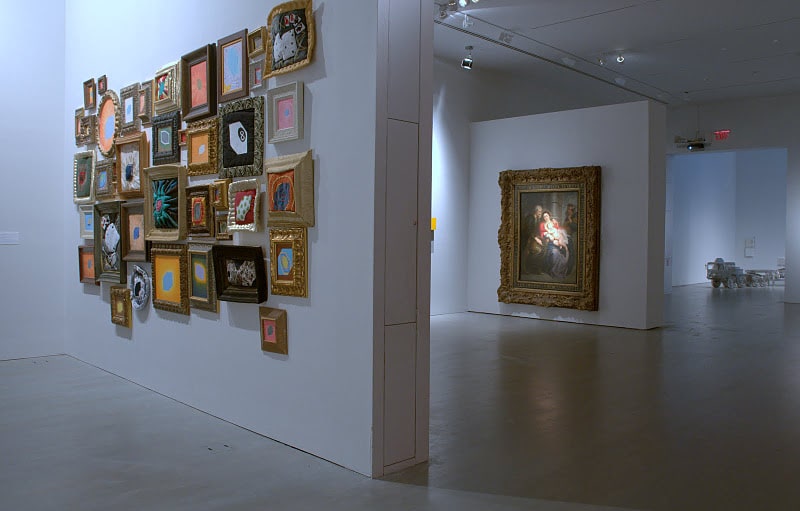the endless renaissance
QUOTE, ENDQUOTE, REPEAT | The Endless Renaissance
In her book Quoting Caravaggio, Mieke Bal argues that when artists reference aspects of earlier work in their own, they irrevocably change the way in which we look at the quoted work. One of the most famous acts of this kind was executed by Marcel Duchamp in 1919, when he drew a moustache and goatee on a cheap postcard of the Mona Lisa, and titled it L.H.O.O.Q. Since then, generations of art students have been unable to see the Mona Lisa without also grinning (at least to themselves) as they remember Duchamp’s cheek. Duchampian subversion aside, the ‘quoting’ of earlier work is not new to art and while Bal ’s book is an articulate presentation of the implications of quotation for art historians and theorists, her book is hardly news to artists themselves who, for centuries, have taken it as a given that what is old is new and vice versa. The Endless Renaissance is an exhibition that, on one hand, looks at how contemporary artists continue to quote and invoke the work of earlier artwork, and on the other hand, demonstrates that the way that we experience the art of the past is anything but stable or predictable.
Many of the quotations in The Endless Renaissance are explicit. Michelangelo’s David is quoted by two contemporary artists, Thierry Delva and Bert Rodriguez. But David, it is often forgotten, is a masterpiece of the Renaissance precisely because it is itself a masterful quotation of the classical world. The term renaissance, remember, means literally rebirth, and refers to the rebirth of classical ideas that took place as Aristotle (by way of Averroës) reappeared in western Europe after a long slumber in the monasteries of Arabic Africa and Ireland. In Delva’s hands, Michelangelo’s idea of the white block of marble that ‘contains’ the sculpture is restated as a white fridge, cool and square like the carrera marble of the original. Here, the ‘original’ David is quoted as a perfect copy not of the sculpture of David, but in the shape of a David refrigerator magnet, bought by the artist from the gift shop at the Accademia in Florence, and rendered precisely in carerra marble, the material of the ‘real original.’ Those who break the rules of museums and open the fridge will discover what Delva’s sculptural block contains, while Rodriguez’s selfportrait as David invokes the fame and celebrity of the artist as a ‘model’ in at least two senses of the word.
Other direct quotations include Kelly Mark’s The Kiss, a version of Brancusi’s embracing blocks where TV screens face each other and “kiss” each other with the soft colors of hardcore gay porn videos recorded as they reflected off Mark’s living room wall. Sharon Quasius’s monumental soft sculpture copy of Géricault’s Raft of the Medusa and Chemi Rosado Seijo’s Renacimiento Del Cubo Plana salon hanging of 40 cubes reference the importance of the cubic form from Giotto and Cimabue, through Malevich and LeWitt. Sol LeWitt (who famously said that his entire career was devoted to making a single work of art that he would not be ashamed to show Giotto) painted a series of Giotto-esque isometric cubes in a palette inspired by Giotto’s Arena Chapel, with which Lewitt was intimately familiar. In turn, Jonathan Monk celebrates LeWitt in two works that both honor and playfully nip at the conceptualist godfather. Thus Monk quotes LeWitt quoting Giotto and 500 years of art at the same time.
Huang Yong Ping, founder of the Xiamen Dada group in China during the mid-1980s, has been inspired by Joseph Beuys and Marcel Duchamp. In the work shown here, he offers vessels quoting ancient Chinese ceramics that also contain animal references to Beuys and Duchamp, as the curious museumgoer that peers inside them will discover. A small video panel that excerpts Eve Sussman’s 89 Seconds at Alcázar shows a detail from Sussman’s video tableau inspired by Diego Velázquez’s famous painting Las Meninas from 1656. Sussman’s work imagines the 89 seconds prior to the famous instant captured in near photographic immediacy by Velázquez, complete with the drama of the film set itself through suggestive images of the tensions between the figures in the paintings. This vignette shows an intimate, furtive moment between Velázquez and a servant girl, as the artist moves toward the easel. Joe Coleman’s Portrait of Carlos Gesualdo is perhaps the artist’s most explicitly conceited painting to echo the structure of medieval forms of narrative imagery, since here Coleman portrays the medieval composer-murderer within a structure meant to suggest manuscript illumination, altarpiece or stained glass window. Coleman’s legendary obsession with violence, the grotesque, death, and pathos, influenced by a range of artists from Bosch and Breughel to Goya, is noted by a selection of Goya’s etchings from the Disasters of War. Wim Delvoye’s Flatbed Trailer Scale Model & Caterpillar 5C Scale Model is a scale model of an earth excavator on a tractor-trailer, rendered in lasercut stainless steel with gothic detail, an unlikely combination of medieval religious architecture and contemporary industry. Art-historical inferences in Delvoye’s work are abundant, with a suggested equivalency between ‘high’ medieval Christianity and its contemporary doppelgänger. Sluts, by Nicole Eisenman could be seen to reference Duchamp’s defacing of the Mona Lisa but it is far more pointed in terms of gender politics than Duchamp’s joke (which Eisenman herself might find more offensive than inspirational, given that the title of Duchamp’s work when read quickly in French sounds a lot like “she has a hot derrière”). Peter Friedel’s Tiger oder Löwe (Tiger or Lion) alludes to the painting Tiger and Snake (ca. 1858) by Eugene Delacroix which hangs in the Olympiasaal of the Hamburg Kunsthalle. Friedel filmed a live tiger and a toy snake in the same room as Delacroix’s painting. On the one hand, Delacroix copied a number of his tiger paintings from Rubens (who was obsessed with tigers and lions), while in turn Delacroix’s tiger paintings would be copied by Rousseau.
This cycle of copying is echoed and illustrated in The Endless Renaissance with a group of works from The Bass Collection set in conversation with a 2008 work by Byron Kim. Kim’s work, Delacroix’s Shadow, is a work based on a story told in Philip Ball’s book, Bright Earth: Art and The Invention of Color.
The tale is told of how Delacroix, seeking to give emphasis to a yellow drapery, decided to go to the Louvre to see how Rubens would manage it. The cabs in Paris were at that time painted canary yellow, and Delacroix noticed that the cab standing in wait for him cast a violet shadow in the sunlight. This was the knowledge he sought; he paid the cabman and returned to work.
Kim’s work is comprised of a rectangular panel painted cab yellow, and lit so as to cast a shadow onto a band of gray painted beneath the panel. The resulting work, a work about Delacorix quoting Ruebens, is itself a distilled quotation by Kim of more recent influence—the horizontal bar of colors evokes Ad Reinhardt, Donald Judd and Mark Rothko, all of whom continue to cast their own shadows on contemporary art. Hung in proximity are Eugène Delacroix’s The Kermesse, a studio copy of the Rubens work from 200 years earlier, now in the Louvre, as well as two works by Peter Paul Rubens and studio, The Holy Family with Saint Anne and The Flight of Lot and His Family from Sodom. Byron Kim, Ad Rheinhart, Donald Judd, Mark Rothko, Eugene Delacroix and Peter Paul Rubens gossip with each other in an endless renaissance that stretches from 1632 to 2008.
Other works in The Endless Renaissance are less direct or explicit in their connection to the past. Thomas Struth and Gregory Crewdson, for instance are known for their large dramatic photographs that evoke monumental themes. Struth’s Pergamon and Musee D’Orsay works and Crewdson’s untitled image of suburban pathos are part of a contemporary ‘school’ of photography that draw on Jeff Wall’s interest in how photography and cinematic film have taken the social, political and visual place of history painting (David, Gericault, West, etc.). In general their massive, highly formalized and excruciatingly composed images echo the monumental scale and overwhelming detail of West’s Death of General Wolfe, or David’s Death of Socrates. But in the case of Struth, we are treated to a secondary equivalency in that the sites of these images are themselves now places of contemporary power and piety. Museums today have come to occupy the social, cultural and political ground that cathedrals and castles once did.
In a similar vein, the portrayal of power in the historical portrait continues in the work of Pieter Hugo whose images echo the composition of earlier masters Hyacinthe Rigaud and John Hoppner. Rigaud’s fabulous portrait of the Earl of Portland and Hoppner’s portrait of the lithe Concannon are highly formulaic, but so is Hugo’s portrait of Abdullahi Mohammed, posing with his hyena. All three are men of power, depicted fearless, confident, baroque in their swagger. Hugo’s other portraits nuance this understanding of the portrait, where uniform (justice, scout) indicates status and identity in no less potent a way than the powerful men of state and church in the high renaissance and baroque. And just as a Prince of the Church is ‘vested’ with the power of vestments handmade with exquisite embroidery of gold and silver in a cope and mitre from the Bass collection, so Charles Ledray’s exquisitely handmade, hand embroidered ensemble of tiny camo pants, jacket and baseball cap in World’s Greatest Dad also finds power through identification with emblem. Details of ecclesiastical vestments have meaning and conduct power, but so do the embroidered patches and details of World’s Greatest Dad. Ledray’s work and the work of the anonymous Austrian nuns that made the cope and mitre are in service to the power of fathers, one low culture, one high. Both seek redemption in the patriarch.
And so it seems that the closer we get to the elements of redemption and power, the less specific works become and the more atavistic their forms. Martin Puryear’s work Confessional is, for all intents and purposes, time-less, quite literally an anachronism—sitting outside the specificities of time and culture, a form evoking the bee-hive cells of the Celtic monks of the seventh century or some other dark vessels of the ancients. But it only evokes these—it does not try to become, remake or renew them. It simply shares with them an energy known only by its effects. In turn, Joseph Beuys’s work, already well quoted by others in this exhibition, also remains fresh and urgent through the use of symbols and materials that are timeless. Schlitten (sled) is a work that references Beuys’ rescue and survival from an airplane crash in the Crimea in a snowstorm in 1946. The artist (at the time a Stukka pilot in the Luftwaffe during the war) was rescued by nomadic Tartars who rubbed fat into his skin and covered him in felt to keep him alive, an experience so primal that fat and felt would become materials so central to his practice as an artist that they continue to be identified with him even today. Beuys’s work, including the cross and the work Silberbesen und Besen ohne Haare (Silver Broom and Broom without Bristles) share with Puryear an energy that is based in the almost magical power of materials and form. Puryear and Beuys’s work each, in their own ways, embodies the sense of the continual renaissance because their work is both old and new at the same time.
When we use art historical terms and demarcations, we do so despite the evidence. We use the term ‘renaissance’ as if it is a noun, a thing. But it is not a noun— it is a verb. It moves. Art is in constant conversation with all the works of art ever made, no matter what the period or culture. All art remains in conversation, and by that very fact, is constantly being refreshed each time we look at it. And for this reason, all art is contemporary.
— Steven Holmes
The Endless Renaissance
